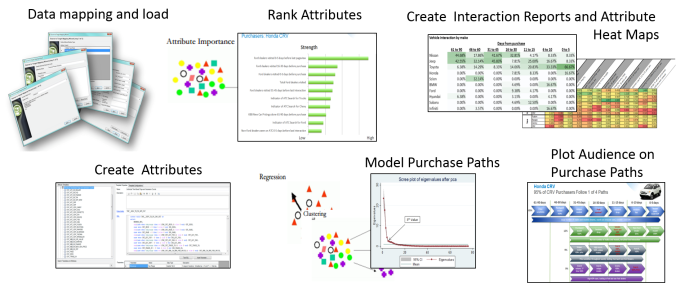Customer Journey Analytics and Data Science
Deciphering the "nuts-and-bolts” of individual customer journeys (and deducing intent) is core to improving customer experience and driving brand loyalty.
Join the DZone community and get the full member experience.
Join For FreeFortune 500 companies are making large investments around Programmatic Marketing (“Marketing that learns”). One of most often implemented use case in Programmatic Marketing is customer journey mapping and analytics. Why? Because, deciphering the nuts-and-bolts” of individual customer journeys (and deducing intent) is core to improving customer experience and driving brand loyalty.
Specifically, the objectives are:
- Visualize and map the end-to-end customer journey by personas
- Optimizing on the right journey attributes to increase yields by >30% lift… Uncover the right combination of web, mobile and physical channels, content and experiences that best achieves the target goals
- Enable marketers to identify journey bottlenecks for individuals and aggregates
- Leverage actual behavior data to enhance and personalize the experience for each individual customer
To facilitate cross-channel marketing, sales, commerce or service, companies must be able to connect all the dots in order to see the ‘big picture’ of how customers interact with them across channels and touch points. Customer Journey Analytics helps organizations know where customers have been, what they’re trying to achieve, and why specific issues led them down a particular channel.
Many customers use an average of five different channels to contact companies and service providers. They switch quickly from web, to telephone, to social media, to chat, to interactive voice response, to visiting a retail location, depending on whichever is most convenient at the moment, all while expecting the company to remember what they said and did over several of their past interactions.
Yet companies as a whole, and divisions such as marketing, sales, and service, manage each of these channels as silos, optimizing the customer experience for each channel independently but losing track of the customer’s overall journey as they jump from channel to channel. A significant part of the problem is fragmented data…product, sales, campaign and customer data was managed by multiple divisions, agencies and vendors.

Customer Journey Analytics and Data Science
Given the myriad of paths that each journey can take as customers move between different channels over time, identifying which paths led to growth, customer loyalty and satisfaction is a data science challenge.
A new breed of customer journey analytics solutions are emerging that uses predictive and real-time analytics as well as machine learning (ML) technologies to identify customer behavior patterns and help determine customers’ next move, likeliness to churn, or interest in a particular product or offer. Organizations can use this information to personalize the customer experience in real time by deciding which offers or messages to present to a customer while an interaction is taking place.
Path analysis allows organizations not only to focus on the individual journey but also to understand the impact of the thousands of journeys that take place each day. By analyzing and monitoring cross-channel paths, companies can detect important insights about groups of people who exhibit a similar pattern of behavior. This could identify problems and opportunities that might once have gone undetected.
The Data Science Challenge in Journey and Path Analysis
There are millions of attributes to collect, aggregate, monitor in a customer journey. The modeling challenge is to know which ones are predictive of opportunity and cost?
- Combination
- Weight
- Order
- Timing
- Execution Context
How can one predict with 95% precision the Path to Purchase? A good data science team would build and improve models that can segment and score customers down to the individual level isolating the most critical attribute to take action upon based on thousands of behavioral attributes.
Summary
Every major vendor – IBM, Salesforce.com, Oracle – is pushing new products and platforms that enable Customer Journey and Path Analysis.
Why? Because there is a shift happening in many marketing organizations from focusing on moments of truth to customer journeys. Customer journeys are a discreet set of interactions a customer has with a brand around a need.
Understanding and addressing those journeys creates real value for managing customer experience and engagement, much more so than improving the performance of individual touchpoints. The end-to-end process matters.
Published at DZone with permission of Ravi Kalakota, DZone MVB. See the original article here.
Opinions expressed by DZone contributors are their own.




Comments